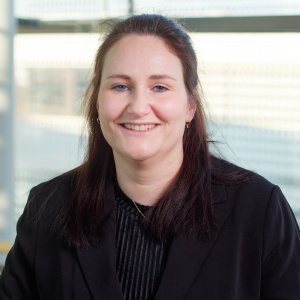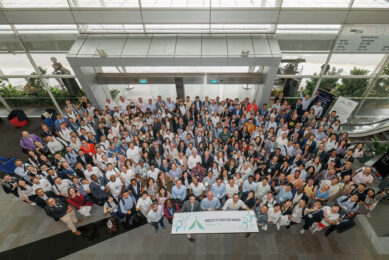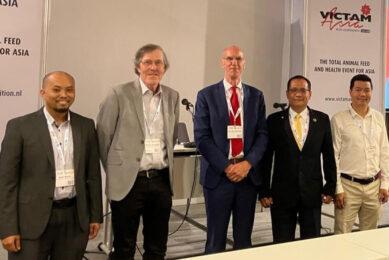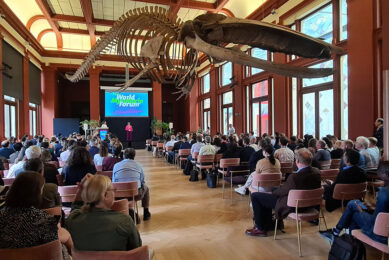Highlights of the first Virtual All About Feed Forum
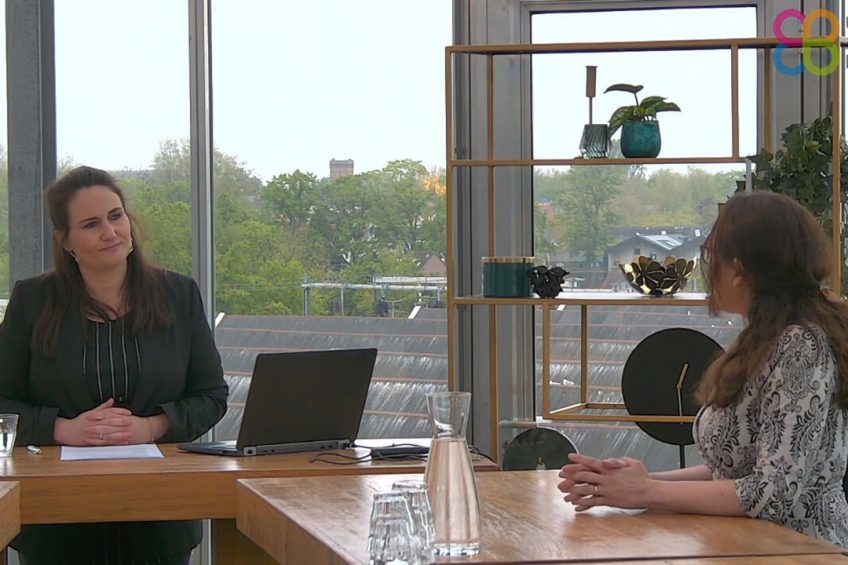
On May 27 the first ever Virtual All About Feed Forum took place. A line-up of noteworthy experts from the feed industry presented their insights on various topics, this article will highlight just a few.
The event kicked off with a presentation from Sonja de Vries professor at Wageningen University & Research on the top of circularity being a critical ingredient for a future sustainable food system. She highlighted the role of animals in this future food system and the need for a shift in feed resources towards greater use of waste streams. Several challenges must be overcome before this shift is practically feasible.
Looking beyond the traditional fibre parameters
Sonja de Vries: “We will be confronted with new products that have a variable quality because of pre-processing. And a lot of these waste products have high fibre and ash content and that impacts the nutritional value and the processing of feed.” To overcome these challenges it is necessary to look beyond the traditional fibre parameters and take account of the diversity of fibre fractions in feed formulation. In addition, addresses Sonja de Vries, to improve the nutritional value of these products it is important to optimise feed processing and feeding systems. “The use of these feed resources will change the dry-matter content of feed and will ask for new processing and feeding systems.”

Cows and pigs are the most suitable species for a circular system
That animals can have a role in our future food system, if we shift towards a circular system, was underlined by Hannah van Zanten, also professor at Wageningen University & Research. In her presentation she pointed out that cows and pigs are the most suitable species for a circular system: “Cows make use of the grasslands that are already available and when needed it is possible to add some high quality feeds from leftovers to their diets. And pigs are very capable of eating food waste, pigs are not picky.”
Animals that could also play a role in this transition towards a more circular food system are insects. This became clear during the presentation of Aman Paul IPIFF Executive committee member. Aman Paul: “Up to a third of the food waste in the EU could be fed to insects. The reared insects could be used for the extraction of proteins and fats for valuable food and feed products.”
Feed safety risks
Safe feed will lead to safe food, and it is therefore of great importance that the safety of animal feed is taken into account. During the Virtual All About Feed Forum several experts gave insight in this topic from different angles. Raw materials can be contaminated with among other things, bacteria, viruses, parasites and mycotoxins. Regiane Santos researcher at Schothorst Feed Research showed the results of a study on the transmission of mycotoxins from sow to piglet. From the study it appears that Zearalenone (ZEN) and Deoxynivalenol (DON) can be transmitted via colostrum and milk. Exposure to 300 ppb ZEN resulted in a decrease in backfat thickness at farrowing, effecting the colostrum production and milk quality. In addition, the piglets experienced a decrease in estradiol levels during lactation. Regiane: “This will affect the reproductive life of these animals in the future.”

Spread of viruses via feed
A topic that is getting more attention lately is the spread of viruses via feed. Vincent ter Beek editor of Pig Progress was one of the speakers in the livestock stage at the event and talked about the relation between the spread of African Swine Fever and feed. According to Vincent, there is definitely a relation, however the connection between feed and the ASF virus depends from country to country: “Feed can play a role in the spread of ASF, mostly when production is fairly basic. If the use of swill, forage or plasma is not professionally done it could be a risk. When the swine production is professionalised these routes wouldn’t occur.” On the other hand, feed could also play a role in solving the ASF problem, mainly when part of a bigger strategy on biosecurity and vaccination. Above all, emphasises Vincent, human behaviour is key in both the spread and the strategy. “If the farmers and industry is aware of what kind of virus it is, what it does and doesn’t do, that would help a lot to be able to fight it. And for that reason I think that knowledge sharing and transparent, immediate reporting about outbreaks is essential.”
Animal nutrition in antibiotic free era
Besides sustainability and feed safety, animal health was definitely a recurring topic during the All About Feed Forum. Nowadays, our livestock can be seen as Olympic athletes and the question is how to keep our high productive livestock healthy. Feed plays a major role in the well-being of animals and the reduction of antibiotic use the last years, asks for new insights and solutions in the field of animal nutrition. Walter van Hofstraeten senior consultant poultry nutrition at Schothorst Feed Research, talked about poultry feed formulation in an antibiotic free era. He highlighted the effect of several nutrients in poultry diets: “When you don’t use antibiotic growth promoters (AGP) in the diets it is important to reduce gut viscosity, by the use of NSP degrading enzymes. Secondly it is important to use good digestible fat sources, that are rich in MCFA, like coconut oil. Thirdly, recent research has shown that it is positive to use some inert fibre sources and to avoid too much fermentable fibre sources.”
In the case of protein, Walter suggests to reduce to use of indigestible protein and lower dietary crude protein level. Looking at the future, when it could be necessary to reduce dietary protein in the future synthetic amino acids may become more important. Walter: “Mostly the number different of amino acids used will increase.”
With more than 20 speakers presenting, the Virtual All About Feed forum was an informative and successful event and we hope you enjoyed this first edition. The digital event brought together many professionals from the industry and we would like to thank all the participants and partners for joining us.


